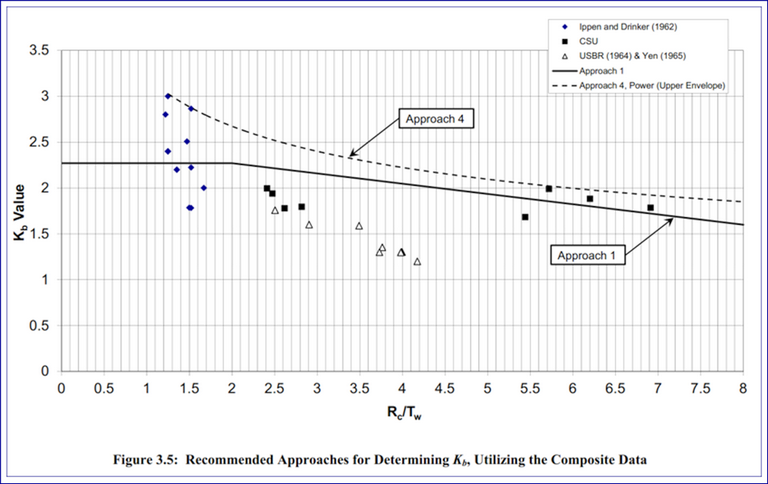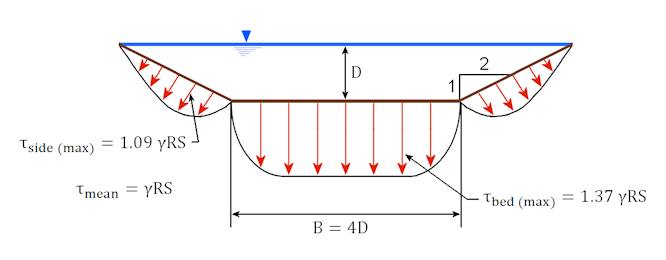Shear stress
Knowledge Base > FAQs
Videos available on our YouTube channel:
________________________________________________
What do the asterisks (*) beside the Segment numbers and Bend Factors mean on the shear stress results?
Please note that for versions of PC-Convey prior to V13.0 the asterisks had a different meaning as discussed here.
From Version 13.0 these are used in the HEC-15+ (BSSARTB) and the IDNTIS shear stress bend factoring approaches to indicate that the number being used to factor up the shear stresses has been limited to the maximum values from experiments undertaken by Ippen and Drinker in 1962. Their work, which was used (together with work by others) as the basis of the formulae in the HEC-15+ approach, showed maximum shear stress factors on the outside and inside of bends of 2.8 and 3.0 respectively as shown below.

Figure 1 - Ippen and Drinker's maximum outside shear stress factor of 2.8

Figure 2 - Ippen and Drinker's maximum inside shear stress factor of 3.0
Figure 3 shows the experimental values of Bend Factors used to develop the HEC-15+ approach (BSSARTB), with a maximum value of 3.0.

Figure 3 - HEC 15+ (Boundary Shear Stress Along Rigid Trapezoidal Bends) graph
Occasionaly, if using the HEC-15+ approach for outside bank Bend Factors (and especially if the risk to life/property is high) or the IDNTIS approach for inside Bend Factors, the formulae developed can result in values above 2.8 (outside) or 3.0 (inside). PC-Convey limits the Bend Factors accordingly.
Pre-V13.0 an asterisk indicated that the Segment formed part of a "du Boys" trapezoidal cross-section of the type for which du Boys' equation for mean (unfactored) shear stress was derived. Figure 4 shows an example of a "du Boys" cross-section.

Figure 4 - Example of a "du Boys" cross-section
PC-Convey V13.0 still checks combinations of Segments in a cross-section looking for "du Boys cross-sections" that the du Boys' equation can be applied to. These could consist of 3 Segments (a "Bed" Segment with a "Side" Segment on each end, similar to the cross-section in Figure 4) or 2 Segments (a Bed Segment with just one Side, which would be like one half of the cross-section in Figure 4). Significantly more information on this can be found in PC-Convey's HELP (search for "approach" [without the talking marks(")] and select the Shear Stress topic). These cross-sections are no longer reported in this manner from Version 13.0 of PC-Convey.


